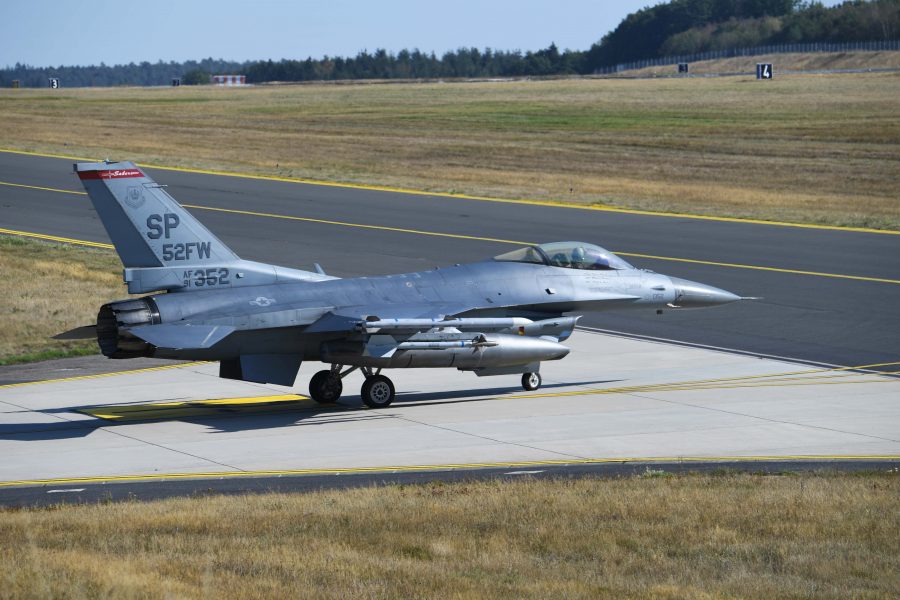Bipartisan lawmakers on Sept. 30 blasted the Pentagon for failing to provide details of its planned force structure changes in Europe, saying the proposed removal of almost 12,000 troops from Germany could harm U.S. alliances.
Under the proposal, first announced in July, DOD would shift F-16s from Spangdahlem Air Base in Germany to Italy, move U.S. Africa Command headquarters out of Germany to an undetermined location, keep two USAF wings in England, and return thousands of troops to the United States at a time when Congressmen agreed deterrence against Russia is important. But DOD officials did not provide any additional details on a possible timeline or cost associated with the move.
“The level of detail we’re getting here is just not acceptable for us to exercise our oversight,” committee chairman Rep. Adam Smith (D-Wash.) said. “It is a very frustrating briefing at this point.”
The Pentagon is conducting “zero-based reviews” of its combatant commands to align them with the National Defense Strategy, and that review coincided with a White House decision to reduce the overall troop levels in Germany. Committee ranking member Rep. Mac Thornberry (R-Texas) said his view of the overall plan is that “a couple staffers in the White House decided they wanted to sell the President on an absolute troop cap for Germany” without understanding the consequences, and then Defense Secretary Mark T. Esper and DOD planners are “trying to put lipstick on the pig” and “my concern is the underlying strength and unity of the [NATO] alliance has not been a foremost consideration.”
“There needs to be an overall strategic plan coordinated with allies rather than have a bunch of rationalizations after the fact,” Thornberry said.
Defense Department witnesses—James H. Anderson, the acting under secretary of defense for policy, and USAF Lt. Gen. David W. Allvin, the director of strategy, plans, and policy for the Joint Chiefs of Staff—said the bulk of the details lawmakers are requesting are still being determined. This includes major issues such as the future of Spangdahlem Air Base after it loses its fighter mission to Aviano Air Base, Italy, as well as the cost of the move and what it means for Airmen.
“In the context of moving to greater rotational forces, there’s still a role for logistics hubs and air bases that can and should be retained,” Anderson said. “That is part of our thinking on the European force structure reposturing. … I know that we’re going to retain the hubs. I want to caveat this a little bit, I’m not familiar with the exact nature of what’s being planned for that particular base.”
Allvin said the cost estimates of the move, and building up Aviano, are ongoing and would not be available for some time. The rationale behind moving the F-16s about 400 kilometers southeast is that it would enhance Aviano’s ability to reach the Black Sea and Eastern Mediterranean, and is “another axis of approach” for U.S. European Command.
Rep. Don Bacon (R-Neb.), who while in USAF served as the deputy commander of Third Air Force and commander of the 435th Air Base Wing at Ramstein Air Base, Germany, said he worried the uncertain future of Spangdahlem would put too much pressure on Ramstein, which would not be able to pick up the full airlift mission.
“I’m worried about pulling out of Spangdahlem. … That airlift hub is critical,” he said.
Anderson said he is confident the force posture changes will serve the interests of the National Defense Strategy, and the Pentagon will “come up with a plan going forward that will enhance our posture.”
Several lawmakers, however, expressed frustration that the details were not worked out either before the announcement or in time for enough rationale to be provided in the hearing. Rep. James Langevin (D-R.I.) said of the AFRICOM move that he has “trouble connecting the dots,” saying he’s not sure how moving the headquarters fixes any existing problem. Rep. Bradley Byrne (R-Ala.) said removing permanent forces from the continent and depending more on rotational deployments and dynamic force employment of sending aircraft and other assets on short term rotations “looks like we’re pulling back, and we think we should be stepping forward” on the continent.
The hearing takes place as Senate and House leaders are expected to begin conference discussions on the fiscal 2021 National Defense Authorization Act after the election in November.
Ramifications for the NATO alliance and the decision-making process at the Pentagon on the overall force structure plan, “has to inform our conference negotiations with the Senate this year, and I presume in years to come,” Thornberry said.
